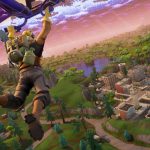The Science of Dragons: How Dreamworks Made A Game Out Of STEM Education
DreamWorks Animation is further expanding its How to Train Your Dragon franchise into games that teach kids about science and technology, while its VFX and gaming divisions find new applications for immersive technology.
What do dragons have to do with STEM?
Two years ago, DreamWorks Animation and Jumpstart, a children’s educational gaming company, rolled out an evolving series of science-themed mobile multiplayer online games, School of Dragons, based on the How to Train Your Dragon film franchise. The MMO has drawn some 16 million players, aged 8-13.
This month, Jumpstart introduces a new School of Dragons 20-game expansion pack, Call of the Death Song, featuring new adventures of the Viking/dragon posse incorporating storylines from DreamWorks’ new TV series Dragons: Race to the Edge, which premiered on Netflix last month. The games involve learning-based journeys to new landscapes that surreptitiously integrate earth science, engineering, physics, and chemistry.
“Dragons aren’t mythological; they’re biological—so the science is all around them,” says Taylor Lord, Jumpstart’s community manager, making reference to the games’ creative gateway into science, which increases in complexity as players learn. “We teach kids to learn by scientific method, to teach them to teach themselves.”
How the Vikings live, how they build, what they grow, the different landscapes they visit, and the way the dragons fly all apply to lessons about engineering, physics, integrated ecosystems and species coexistence. The games require players to use science to solve problems to complete quests. For example, Alchemy Adventure has kids mixing elements from the periodic table to desired flame colors and explosions. Another, The Lab, teaches players the scientific method by solving problems by having them gather information, form a hypothesis, and test it out.

“One of the things we learned with 8-13 year olds is you’ve got to keep them engaged,” says Jim Czulewicz, Jumpstart’s chief revenue officer. “The kill-and-drill styles of the old educational products just don’t work. No kid wants to come home from school and do more schoolwork. But if you can fly a dragon and learn scientific principles without even knowing you’re learning, it’s a winner.”

School of Dragons is Jumpstart’s second DreamWorks venture in their three-year partnership, after their successful Madagascar education games. It’s available on 10 platforms, and provides weekly content updates and a seamless experience between mobile and desktop apps. The games incorporate guidance from teacher panels, an in-house science curriculum designer, and the players themselves.
“These are the most vocal fans I’ve ever heard in my life,” laughs Czulewicz. “They tell us exactly what they want to see, when we’re wrong with the color of a dragon, and catch mistakes. It’s very refreshing and a little unnerving, but it proves the brand is continuing to grow.”

Leveraging technology
While Dragon games train the next generation of STEM students, DreamWorks’ current crop of technologists are testing other digital boundaries.
Gaming division DreamLabs combines DreamWorks storytelling with innovative technologies to create interactive fan experiences.
“Anywhere there’s a digital touchpoint with our consumers, we want to create new and cutting edge things for them to see, hear, and try,” says DreamLab founder Brad Herman. Herman focuses on development, while Shiraz Akmal, DreamLab’s head of business and product development, migrates those ideas to market.

DreamWorks Color is an available app that turns a 2D dragon that kids color themselves into a 3-D image on their iPads. Dragon Flight is an Oculus Rift virtual reality experience that gives plays the sensation of flying a dragon, complete with cold air blowers for a feeling of wind, and animated flourishes like sea mist stirring up when your dragon skims the water surface.

Circumventing limits
Over on the series side, animators have been getting their own STEM education of sorts, as they’re challenged to find creative ways around TV animation computing limits to better visualize the scripts.

“There were certain technological limits to what we could do on a TV series,” says David Jones, Race to the Edge’s VFX supervisor. Take, for example, a gaggle of dragons. “The software crashed if we loaded more than 10 (fully animated) characters, maybe 11. But they really wanted to do something with a flock.”
So, instead of a swarm of animated characters, Jones’ team saved them as a series of 3-D still images of each character flapping its wings, then created a collection of particles, and told the computer to replace each with an image from the cycle of the 3-D wing flaps. “So we didn’t have to load 7,000 rigged (fully animated) characters, but pre-generated shapes of a dragon flapping its wings,” says Jones. “We only loaded the rigs of anyone doing something specific for the shot.”

That’s when the trouble started. “Once we could do flocks, the writers said, `So what else can’t you do?'” laughs Jones. “`Well, water interaction is terrible for us.’ They said,`That’s funny, because we’ve written this scene about a tidal wave!’ So it became a running joke that anything we couldn’t do they started writing scripts about. On the bright side, the episodes are never boring for us.
“I came from live action where the rules are different,” adds Jones, who worked on Black Hawk Down and Minority Report. “Because I didn’t know the limitations [of animation], I didn’t really know to say `no’ to people, so we always ended up figuring out a way to do it. But I applied things I’d learned in live action to fire, smoke, and water that’s not the way you traditionally do it in CG cartoons. And it gives the show an interesting feel—like a little twinge of realty.”
Fast Company , Read Full Story
(161)














